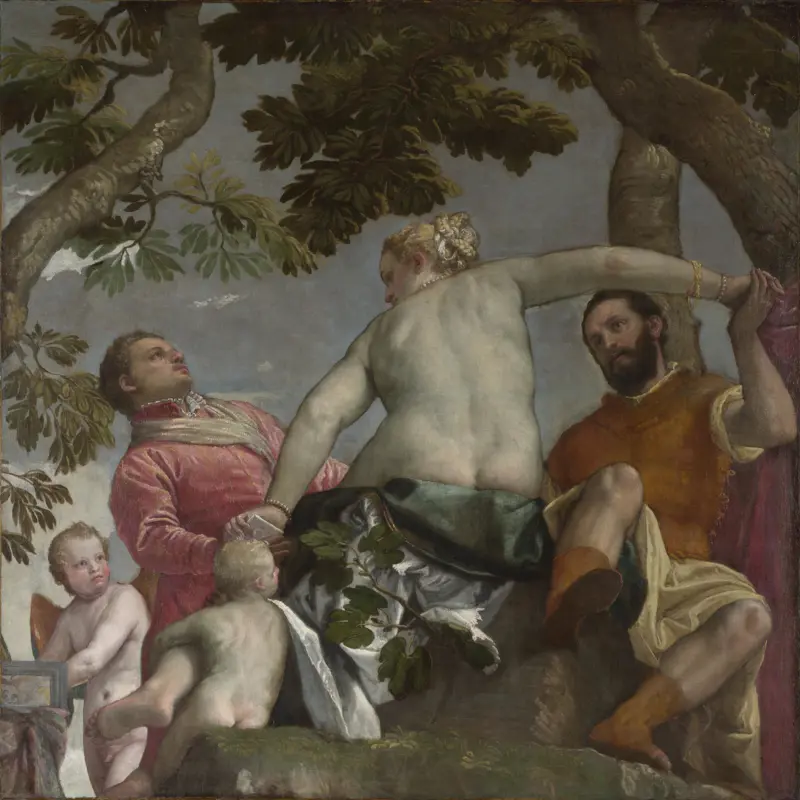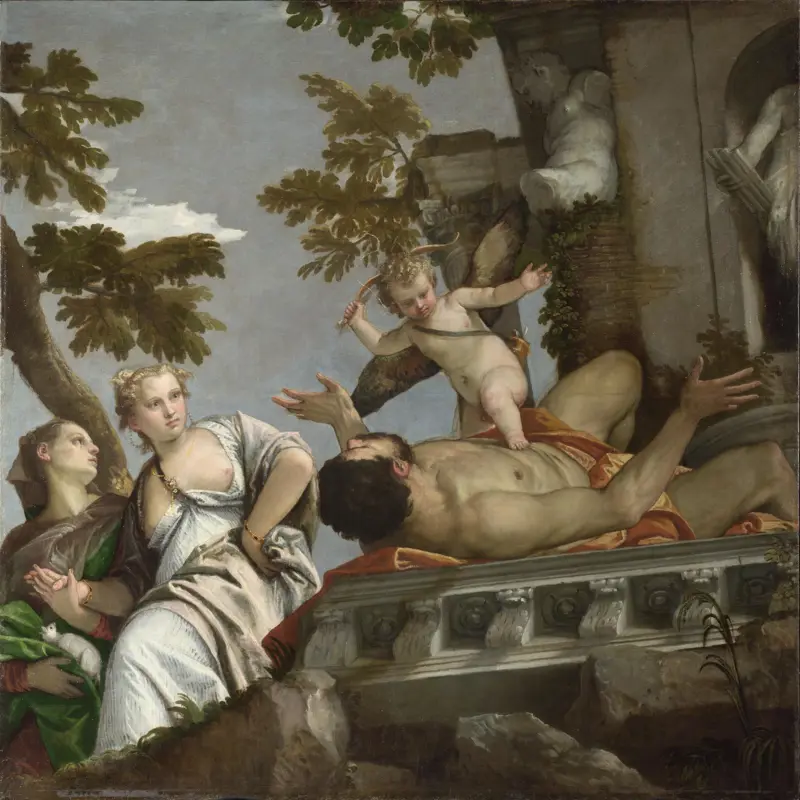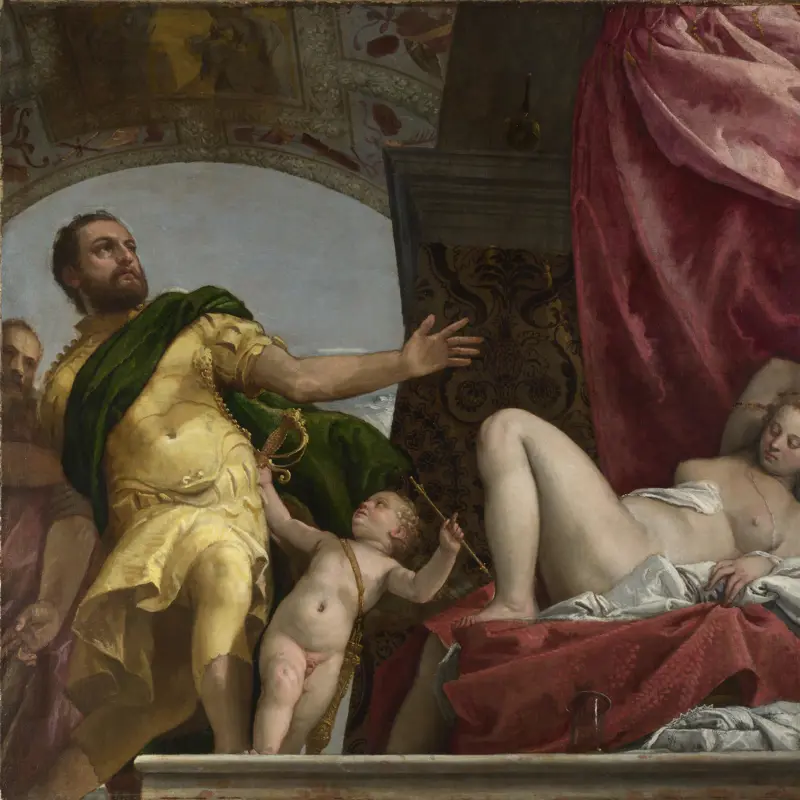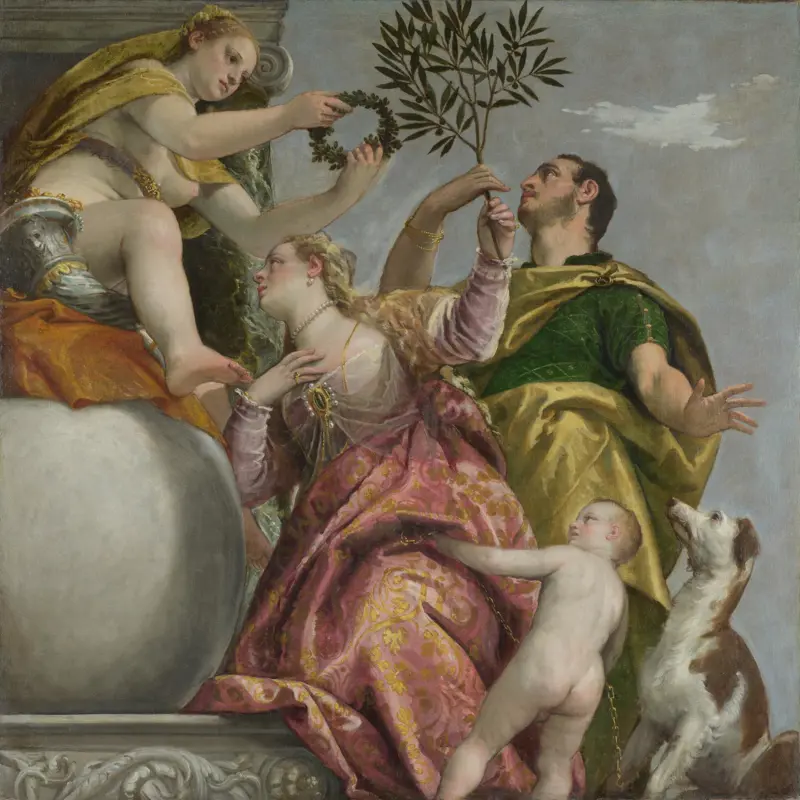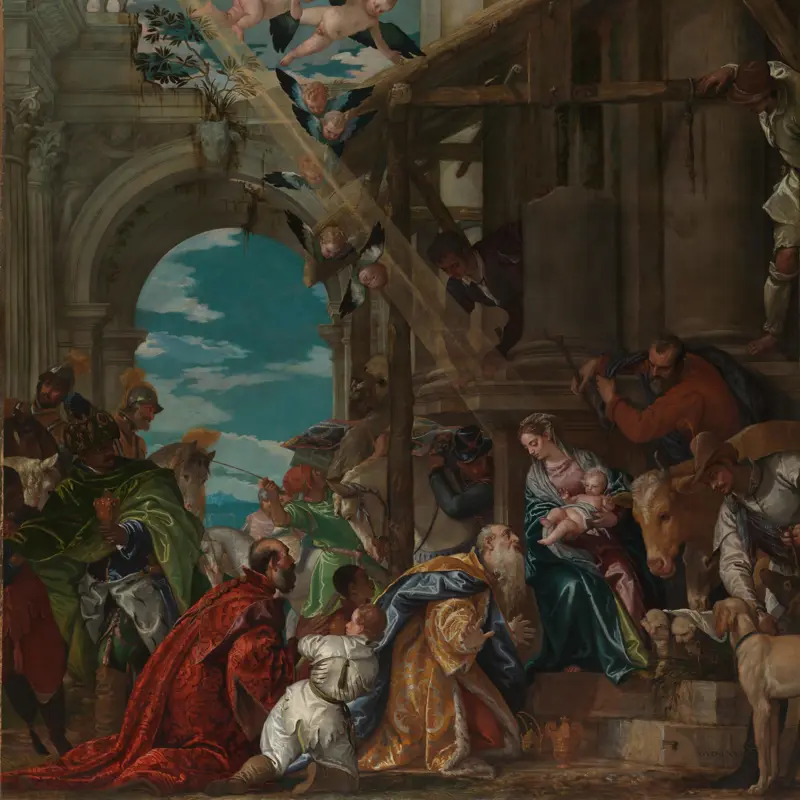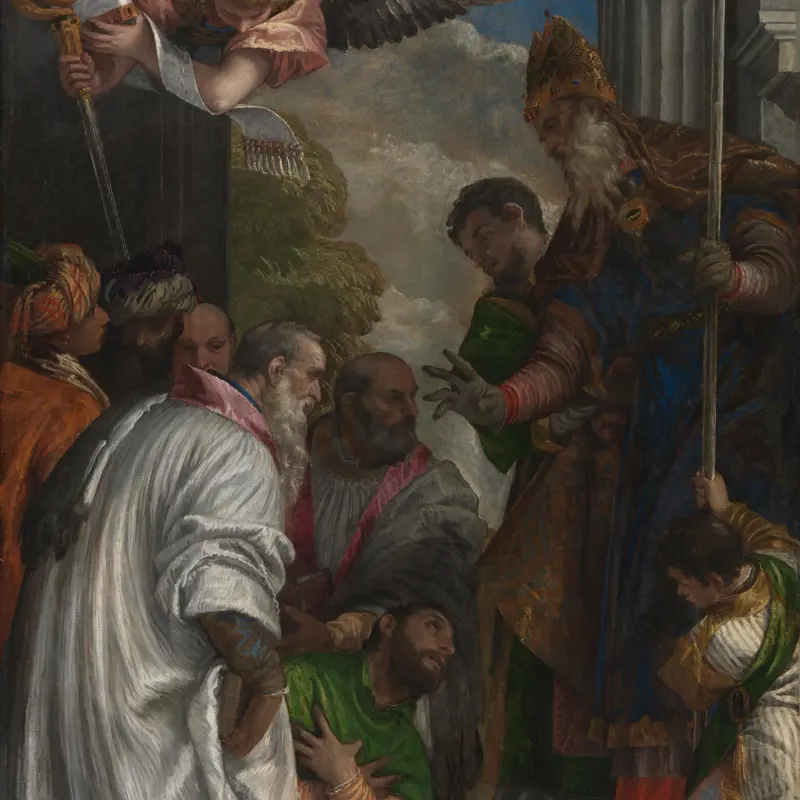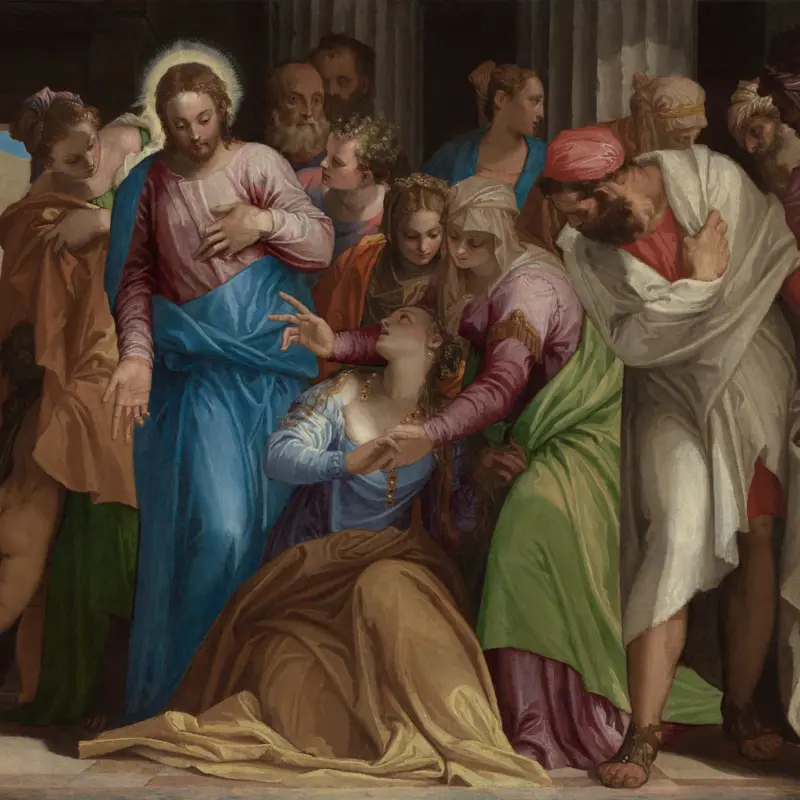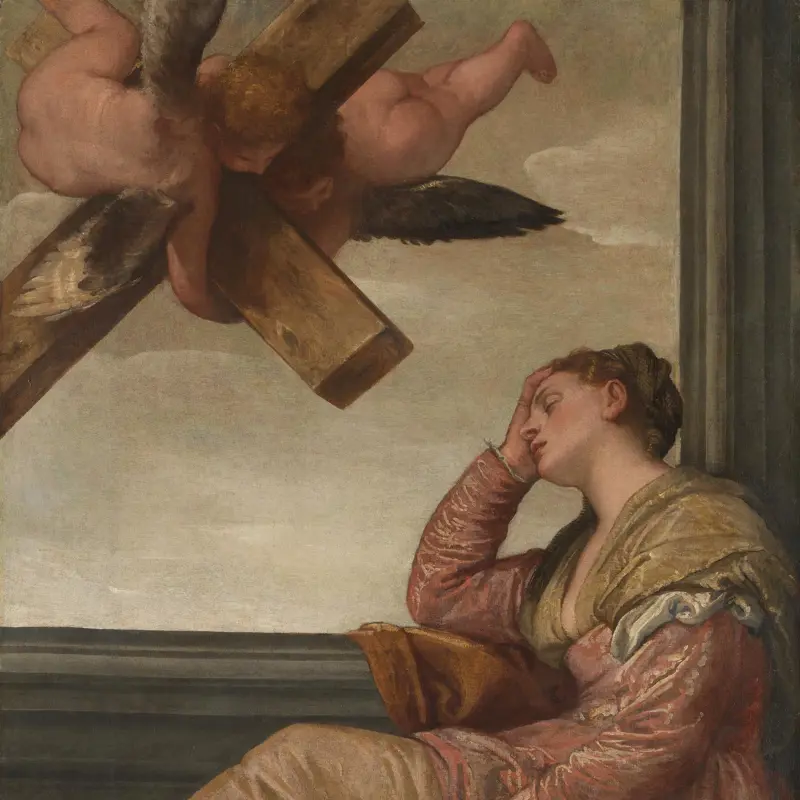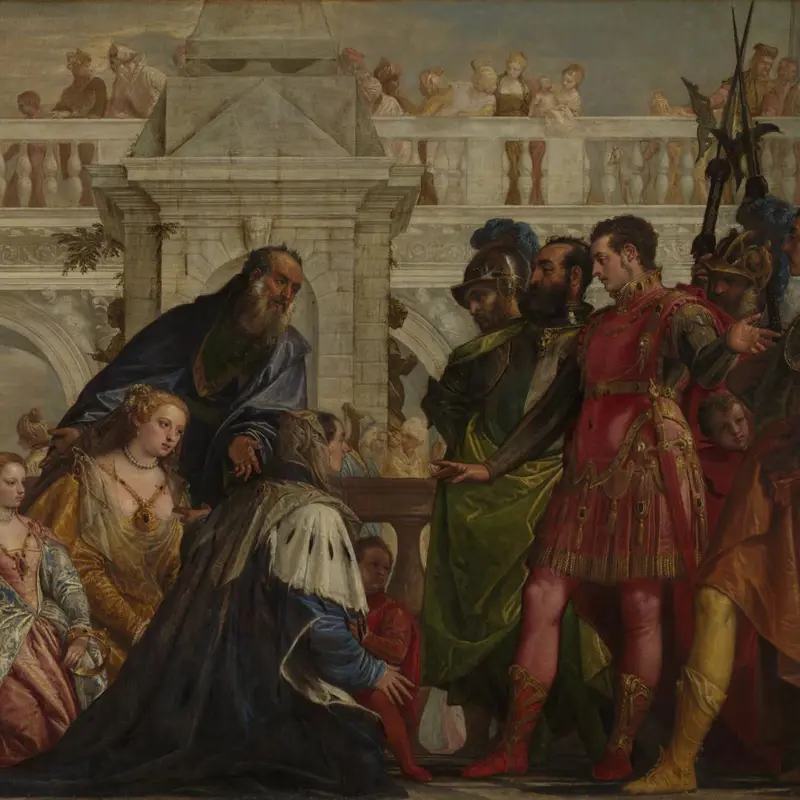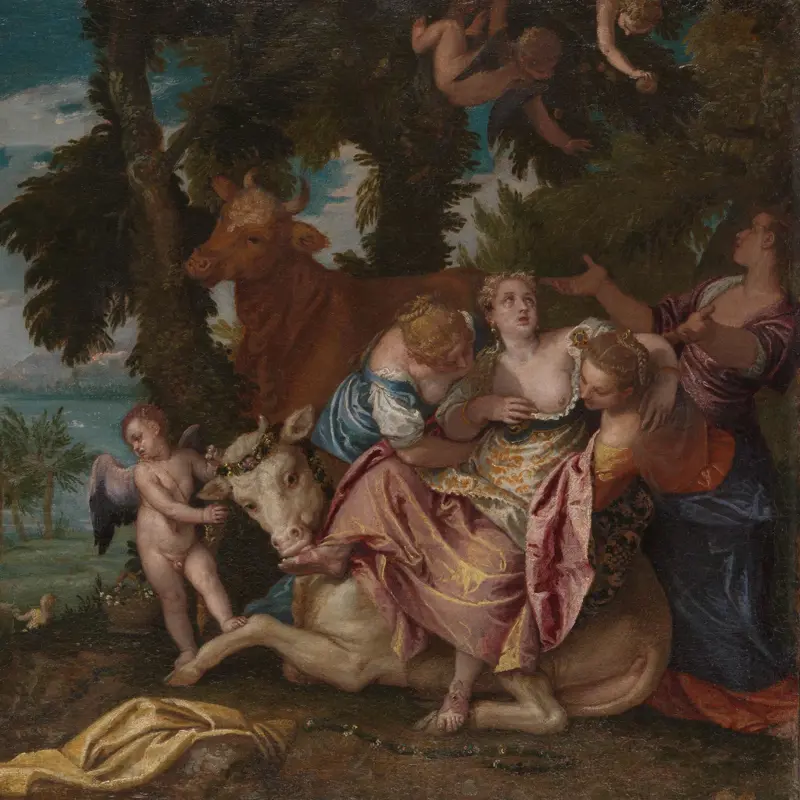Paolo Veronese, 'Respect', about 1575
About the work
Overview
This is one of a series of four paintings by Veronese that concern the trials and rewards of love, although their precise meanings remain unclear. The compositions are designed to be seen from below, so we know the pictures were intended for a series of ceilings.
Cupid drags a man in military costume by his phallic sword hilt towards a naked woman sleeping on a bed. Cupid’s golden arrow points rather crudely to the woman’s genitals, which are concealed by the red cloth over her leg. However, the man’s companion pulls him away by his arm.
The man’s contorted pose suggests his dilemma – he is being pulled in two different directions at the same time. The title ‘Respect’ is not original and was only given to the painting in 1727, but it may be that the man decides to resist temptation out of respect for the woman because she is asleep.
Key facts
Details
- Full title
- Respect
- Artist
- Paolo Veronese
- Artist dates
- 1528 - 1588
- Part of the series
- Four Allegories of Love
- Date made
- about 1575
- Medium and support
- oil on canvas
- Dimensions
- 186.1 × 194.3 cm
- Acquisition credit
- Presented by Lord Darnley, 1891
- Inventory number
- NG1325
- Location
- Room 9
- Collection
- Main Collection
- Previous owners
- Frame
- 19th-century English Frame
Provenance
Additional information
Text extracted from the ‘Provenance’ section of the catalogue entry in Nicholas Penny, ‘National Gallery Catalogues: The Sixteenth Century Italian Paintings’, vol. 2, ‘Venice 1540–1600’, London 2008; for further information, see the full catalogue entry.
Exhibition history
-
2009Titian, Tintoretto, Veronese: Rivals in Renaissance VeniceMusée du Louvre17 September 2009 - 4 January 2010
-
2014Veronese: Magnificence in Renaissance VeniceThe National Gallery (London)19 March 2014 - 15 June 2014
-
2014Paolo VeronesePalazzo della Gran Guardia5 July 2014 - 5 October 2014
Bibliography
-
1959Gould, Cecil, National Gallery Catalogues: The Sixteenth Century Venetian School, London 1959
-
1987Gould, Cecil, National Gallery Catalogues: The Sixteenth Century Italian Schools, London 1987
-
2001
C. Baker and T. Henry, The National Gallery: Complete Illustrated Catalogue, London 2001
-
2008Penny, Nicholas, National Gallery Catalogues: The Sixteenth Century Italian Paintings, 2, Venice, 1540-1600, London 2008
Frame
This is one of four symmetrical Sansovino-style frames made in England in 1895. Crafted in pinewood and oil-gilt, it features outset square corners decorated with rusticated scrolls and festoons made from composition. At the centres are convex ‘mirrors’.
The four frames were created to historicise Veronese’s Four Allegories of Love. This frame may have been produced by the framemaker Reginald Dolman. By 1932 the frame was fitted with a glazing door and had received new gilding. The frames are cited in Robert Benson’s 1913 report, Notes on Frames.
About this record
If you know more about this work or have spotted an error, please contact us. Please note that exhibition histories are listed from 2009 onwards. Bibliographies may not be complete; more comprehensive information is available in the National Gallery Library.
Images
About the series: Four Allegories of Love

Overview
These four paintings by Veronese concern the trials and rewards of love, although their precise meanings remain unclear and have been much debated. The titles are not original and were given to the paintings in 1727. The scenes are not necessarily meant to go in any particular order.
The compositions are designed to be seen from below, so we know the paintings were intended for a ceiling or a series of ceilings. The lower parts of the compositions seem to have been cut, and in several cases the feet of the figures are not visible. These features are disconcerting when the pictures are hung on a wall. The composition of each painting forms a strong diagonal, which would help relate the paintings to each other on a ceiling. We do not know who commissioned them, but it may have been a wealthy patron in Venice or one of the Holy Roman Emperors.

